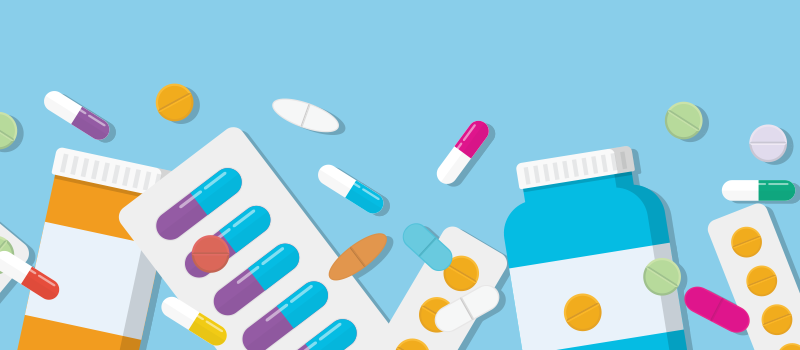How to Use Silver Sulfadiazine Cream for Burns

If you have suffered second or third-degree burns, your health care professional may recommend using silver sulfadiazine cream (common brand name: Silvadene) on your burned skin to prevent or treat infection caused by the burn. Please continue reading for some tips on the best way of using this medication.
Why did my healthcare professional prescribe silver sulfadiazine for burn wounds?
In addition to its crucial role in regulating body temperature and fluid, intact human skin is an important defense mechanism for the body against infections. Burns create a breach in the skin’s surface, increasing your risk of a serious infection. In fact, burn sepsis (severe organ dysfunction as a result of an infection) is one of the common complications in burn patients. Therefore, it is critically important to prevent and treat infections in burned skin.
Silver sulfadiazine (brand names: Silvadene, SSD Cream, and Thermazene) belongs to a group of medications called sulfa drugs. Specifically, silver sulfadiazine is an antibiotic that works by preventing bacterial growth or killing the bacteria.
Historically, silver sulfadiazine is considered the best treatment and the agent of choice for the treatment of minor burns in outpatient settings. However, more recently, there are reports showing that there may be other treatment options for minor burns that may be as effective or even better than silver sulfadiazine creams. With that said, while silver sulfadiazine cream is still being used to treat wound infections caused by second- and third-degree burns, your doctor may decide to use other agents if they are deemed to be a better choice for you.
Can silver sulfadiazine prevent burn wound infections?
Yes, silver sulfadiazine can both treat and prevent infection caused by second- and third-degree burns.
Does silver sulfadiazine cream heal burns?
Silver sulfadiazine is a topical agent with antibacterial properties. It is used to prevent and treat burn infections in people with second- and third-degree burns. This antibacterial cream is effective against a wide variety of bacteria. By killing bacteria to prevent further infection, silver sulfadiazine can promote the healing process of the skin. However, keep in mind that skin healing also depends on other factors, and there are other things you must do to help heal minor burns. For example, you should keep the burn wound covered with a loose dressing and make sure it stays clean; even though it can be very tempting, you shouldn’t break blisters, and gently wash the burn area with water and fragrance-free, mild soap daily.
If you have severe burns or a large area of the body is affected, you must be treated in a hospital.
How do you use silver sulfadiazine on a burn?
Silver sulfadiazine is applied to burns after they have been cleaned and debrided to remove burned or dead tissue. The cream is applied to burn areas using a sterile technique (you should wear disposable sterile gloves during the application).
Read the prescription label carefully and use silver sulfadiazine exactly as prescribed. Clean the burned area daily and remove any dead skin. Your provider will probably instruct you to apply a thin layer (1/16 inch or 0.2 centimeter) of the cream on your wounds 1-2 times a day. It’s important to keep your wounds covered with silver sulfadiazine at all times. If some of the cream gets wiped off, you should reapply it.
If you notice that the Silvadene cream turns yellow after a few hours — this is a normal reaction and nothing to worry about.
Should you cover a burn after applying Silvadene?
Usually, there is no need to cover a burn after applying Silvadene (silver sulfadiazine). The wound can be left uncovered. However, if you need to cover the wound, dressings can be used. For example, a Telfa pad, which is a sterile gauze dressing, can be placed over the burn if needed. Make sure you keep the burn dressing clean and dry. Your healthcare provider may ask you to cover the wound with a dressing when showering.
What precautions should I take when using silver sulfadiazine?
Before starting treatment
Tell your doctor or pharmacist if you have ever had an unusual or allergic reaction to silver sulfadiazine, other sulfa drugs, or any other medications.
Give your healthcare provider a complete list of your other medicines, including prescription drugs, over-the-counter medications, dietary supplements, and herbal products. This will help prevent drug interactions with other drugs.
Tell your health care professional if you are pregnant or breast feeding. It is unknown if silver sulfadiazine is excreted in breast milk. You should also tell your doctor if you have liver disease or kidney disease.
Missed dose
If you miss a dose, apply the cream as soon as you remember. However, if it is almost time for the next dose (application on the burned area), skip the missed dose and go back to your regular dosing schedule. Do not use extra medicine to make up for a missed application.
What to avoid
Do not use silver sulfadiazine on premature babies or infants under 2 months of age. Also, do not use this medication for any other skin condition. Remember, silver sulfadiazine is for external use only.
Check with your healthcare professionals before using similar drugs or other creams, gels, or lotions in the treated areas. Continue using silver sulfadiazine until your doctor tells you to stop. You need to continue using this medication on the affected area until it has healed completely and the potential risks of infection are no longer present.
Storage
Store the medication at room temperature and avoid exposing it to heat or direct light.
Accidental ingestion
In case of accidental ingestion, tell your doctor immediately, call the national poison control center at 1-800-222-1222, or seek emergency medical attention.
What are the adverse effects of Silvadene cream?
Possible side effects of silver sulfadiazine include pain, itching, and burning in the treated areas. These side effects usually go away once your body gets used to the medicine. Call your doctor if the side effects are severe or persist after a few days.
Some people can develop other side effects that are more serious. Call your doctor or seek medical help as soon as possible if you develop the following symptoms: unusual bleeding or bruising, signs of infection (fever, sore throat), jaundice (yellowing of the skin or eyes), weakness, tiredness, skin rash, or joint pain.
How long does silver sulfadiazine cream take to work?
It can take up to 3 weeks or longer for second and third-degree burns to heal. Silvadene cream (silver sulfadiazine) stops the growth of bacteria in an open wound. You should continue using this particular drug until the burned skin has healed satisfactorily and the burned area is ready for skin grafting.
References:












SOCIAL